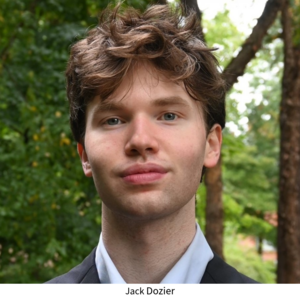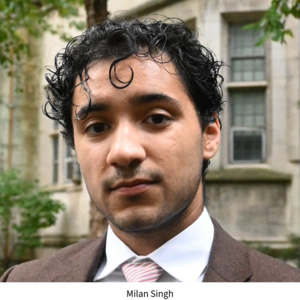Yale Youth Poll Finds Split in Gen-Z Political Views

Young people today __________.
Did something come to mind? Some generalization based on your experience, something you’ve read, something you remember about yourself when you were younger?
How confident are you in your answer? How did you define “young?” And how stable might any response remain over time?
Through Yale’s Institution for Social and Policy Studies’ Democratic Innovations program, undergraduate students created Yale Youth Poll to answer these and many other questions.
In the fall, they fielded the largest poll in the country to survey the opinions and knowledge of voters under 30, aiming to guide policymakers, advocates, journalists, and researchers. With their latest results, the students have learned that in many ways young voters resemble the electorate as a whole. And even among themselves, young voters can possess substantially different political opinions.
For example, in a sample of 4,100 self-reported registered voters, those aged 22 to 29 favored Democratic candidates in the 2026 congressional elections by a margin of 6.4 percentage points. But voters aged 18 to 21 preferred Republicans by a margin of 11.7 points.
“That surprised me,” said Jack Dozier, deputy director of Yale Youth Poll and a rising junior. “Young people are traditionally thought of as the more liberal age group. And it’s true that voters who are 18 to 29 years old are more progressive than those over 30. But we are also now seeing how those within this group who went through high school during the COVID-19 pandemic are significantly more conservative.”
Dozier believes the pandemic fundamentally affected the way younger people view government, leaving them more open to the influence of new voices in conservative media popular on social media.
“I believe there has been a significant change in the way young adults are growing up,” Dozier said. “There were always challenges and threats, such as climate change. But not the complete and utter societal upheaval we saw with COVID. Their futures went from a predictable path to something that seemed completely unbounded.”
Other findings from the spring survey include President Donald Trump’s relative unpopularity with all age groups, including a net negative 6.2-percentage-point favorability among all voters and a negative 17.9 favorability among voters under 30.
In addition, young voters supported allowing asylum seekers who enter the country illegally to stay by a 25-point margin, while voters overall opposed allowing them to stay by a 2-point margin.
And both young voters and all voters opposed allowing teens aged 13 to 17 to have access to gender transition treatments. However, young voters only opposed such treatments by only a 0.1 percentage-point margin, compared to a 24-point margin expressed by all respondents.
“For me, the big takeaway is that young voters are pretty similar to older voters — or at least the differences are smaller than the conventional wisdom might suggest,” said Milan Singh, director of Yale Youth Poll and a rising senior. “Younger people are somewhat more liberal on immigration and transgender issues. A bit more socially liberal. But not by that much.”
Singh and Dozier expressed their gratitude to ISPS Director Alan Gerber, Sterling Professor of Political Science, and ISPS faculty fellow Josh Kalla, who serves as an advisor for the project.
“What is impressive about this operation is that it is all genuinely student-run,” Kalla said. “They select and then program the survey questions, coordinate with the university’s procurement department to pay vendors, gather the data, analyze the data, write it up, and work with journalists to raise awareness of the results. What they are doing is a fulltime job for most people, and they are still doing their coursework.”
Over the summer, the growing team of students in the organization hope to roll out a series of short on-the-street polls to spot-test knowledge and public opinion to better understand the youth demographic over a diverse geographic span and provide inspiration for next school year’s polls.
“Young voters are increasingly a larger share of the electorate,” Singh said. “The hope is that people can make better decisions with more accurate information. And we can help open up a conversation, maybe encourage others to go out there and dig deeper, ask different questions.”
Kalla said the findings about the divide within Gen-Z on political views has already gotten other scholars and journalists interested in the topic. And learning more about younger voters can perhaps overturn assumptions campaign operatives often make.
“Given the closeness of American politics, these small shifts in voting behavior and opinion have important implications for who wins elections and how elections are run,” Kalla said. “Young people are often under-studied and under-surveyed in American politics. The research these students are doing helps spark these important conversations.”
Gerber praised the students for their work ethic and the design choice to focus on young voters.
“The students in this Democratic Innovations-supported organization ensured a large enough sample of younger voters to accomplish the subgroup analysis and thereby improve our general understanding of some of these nuances,” Gerber said. “Not only are these students adding to our knowledge of the electorate, but this hands-on experience in designing and analyzing survey data will help them become more intelligent citizen consumers of polls.”
To share your ideas for questions to include in the next youth poll, send an email to YaleYouthPoll@gmail.com.